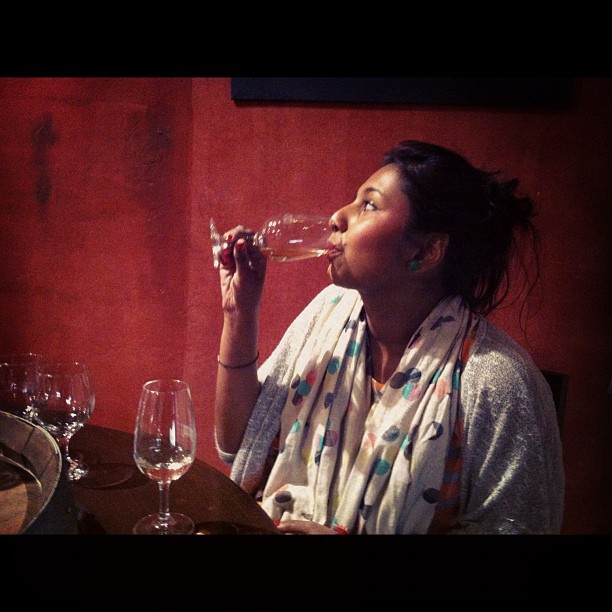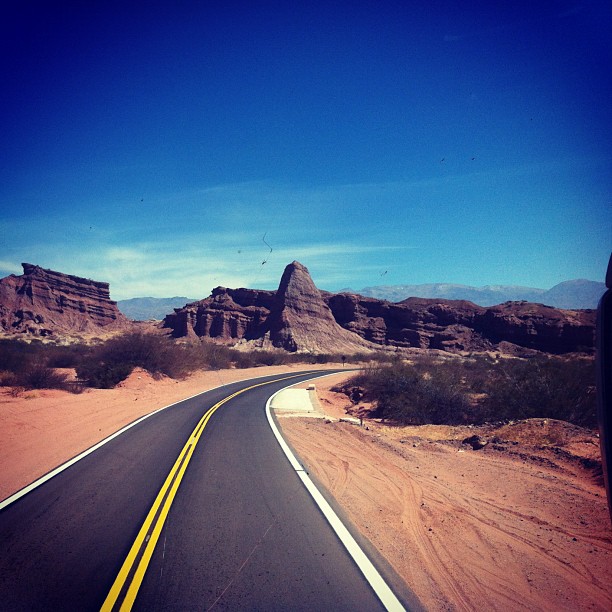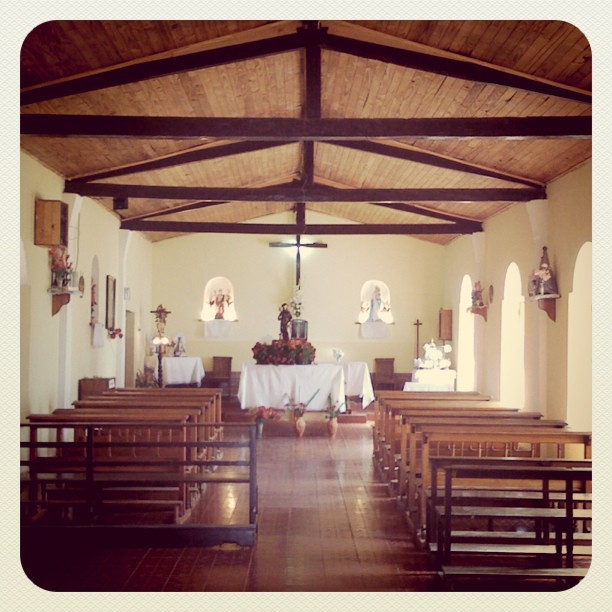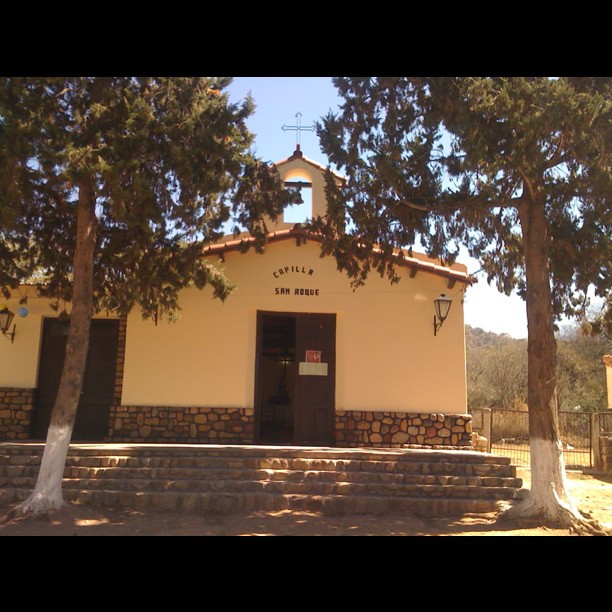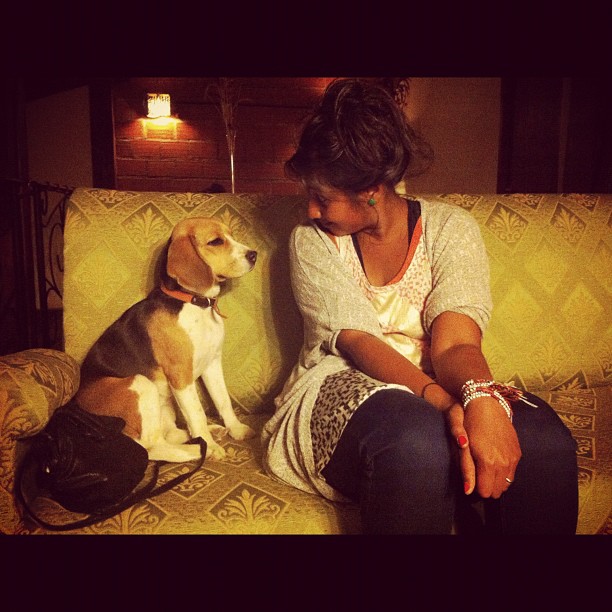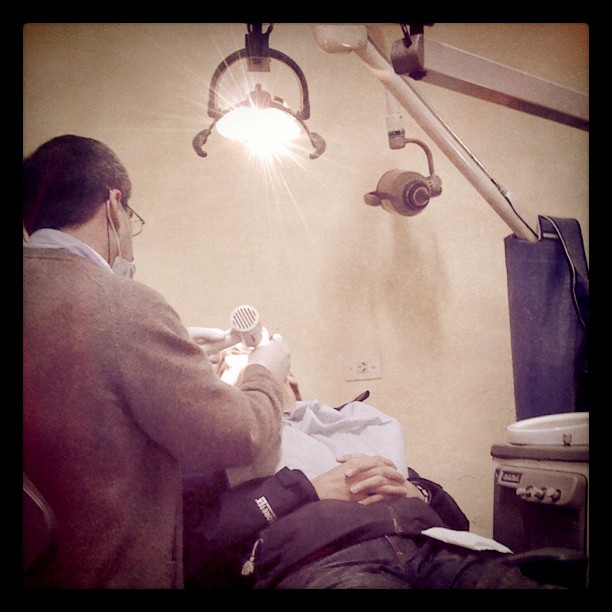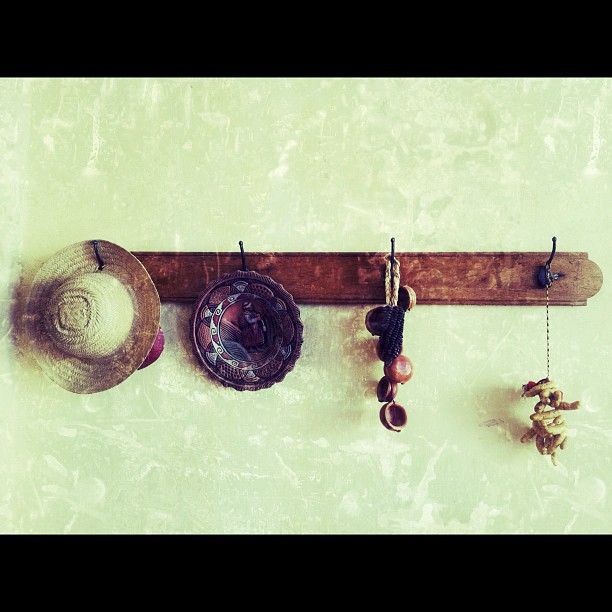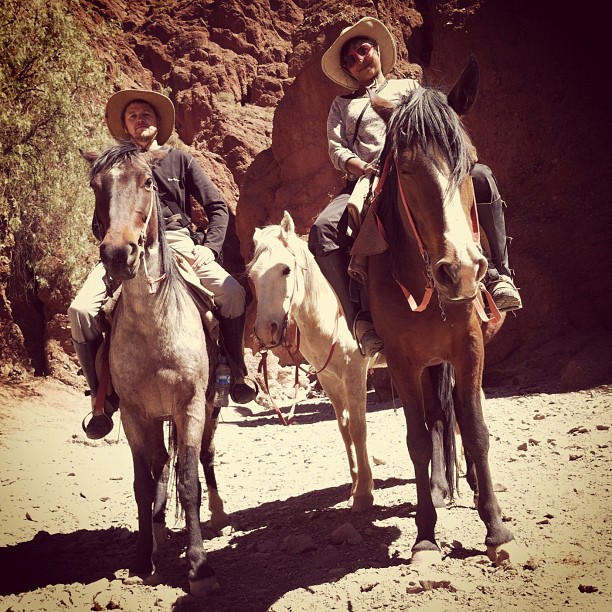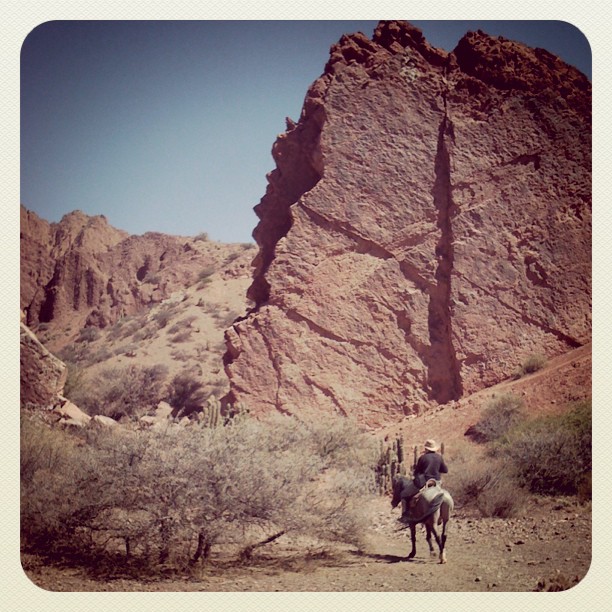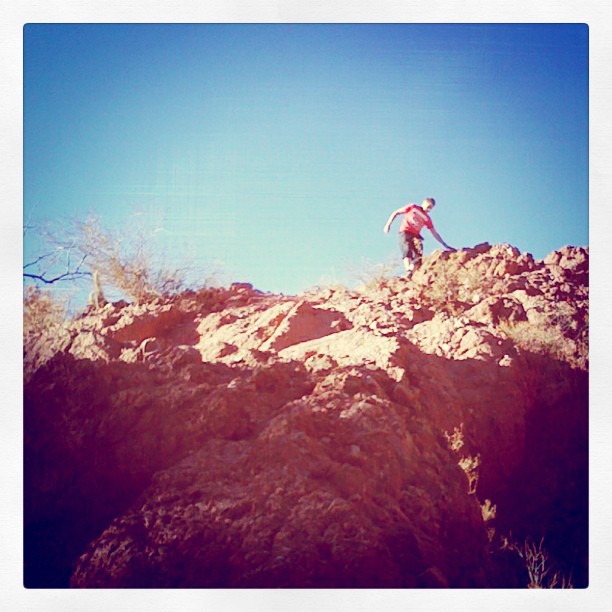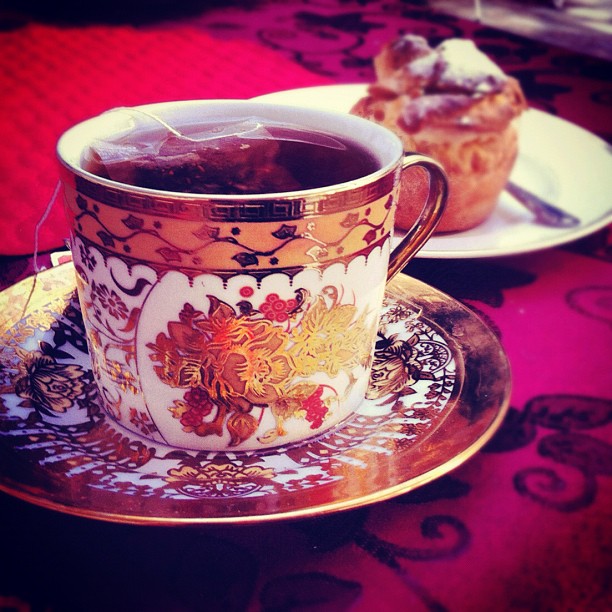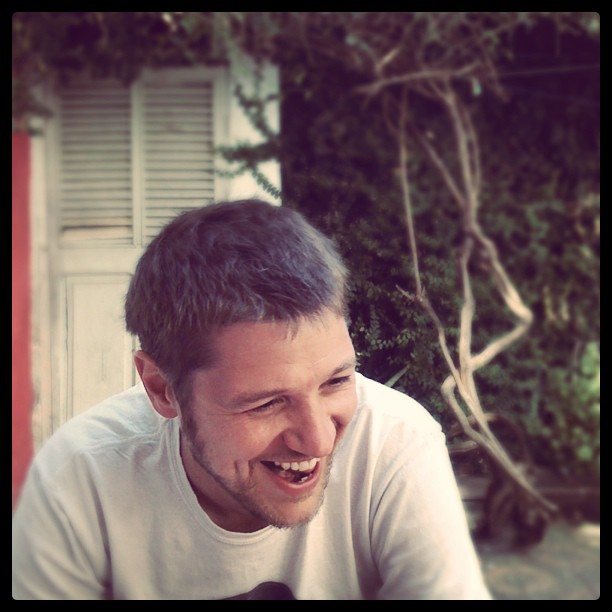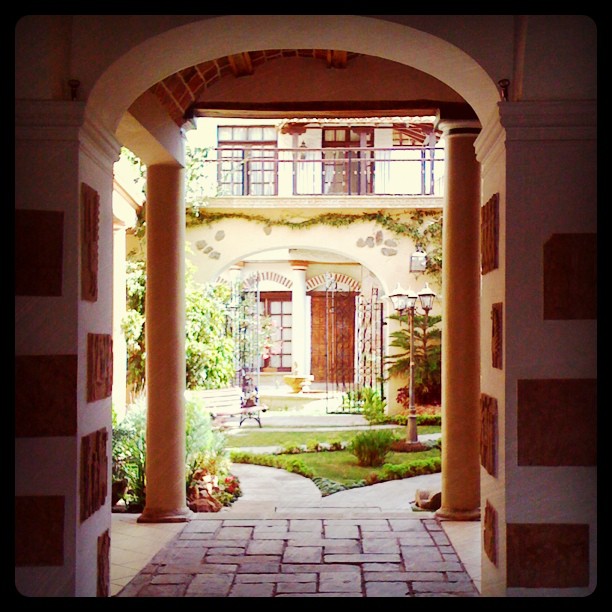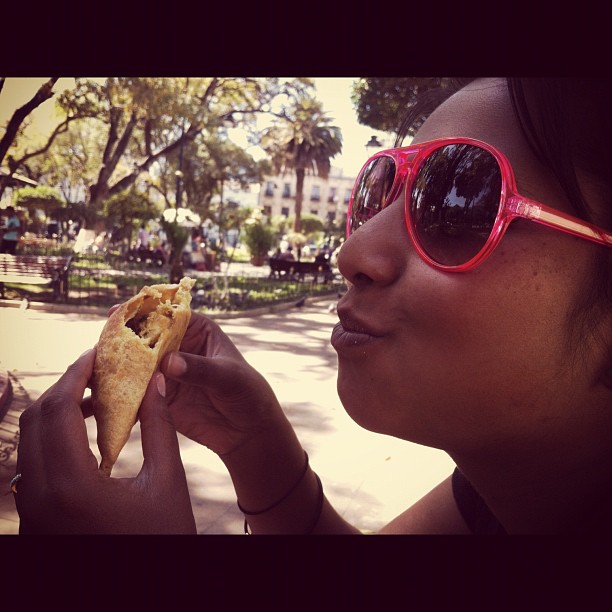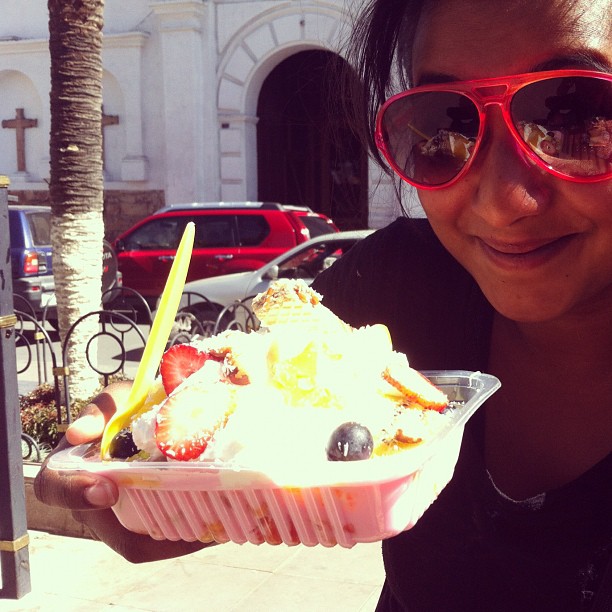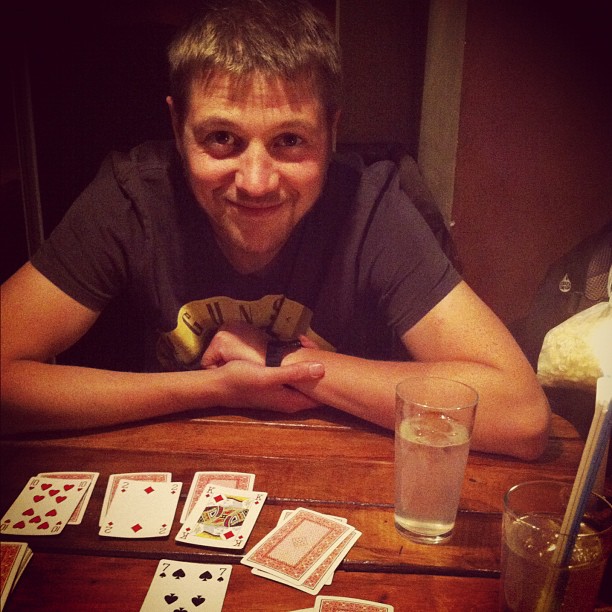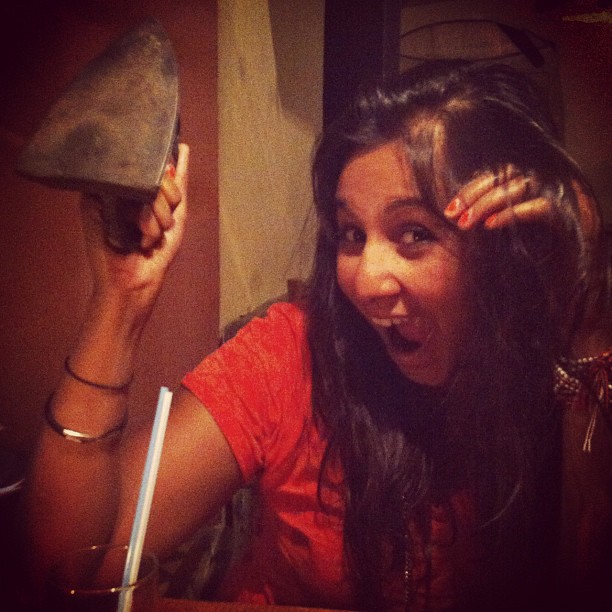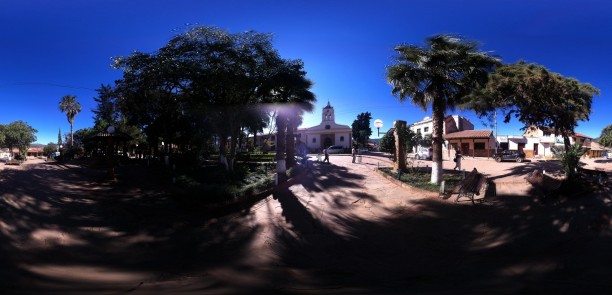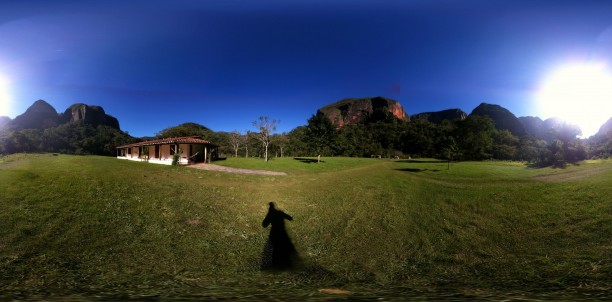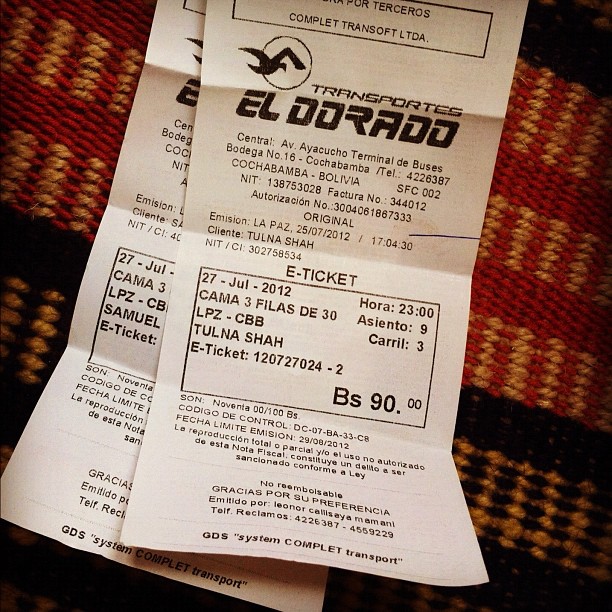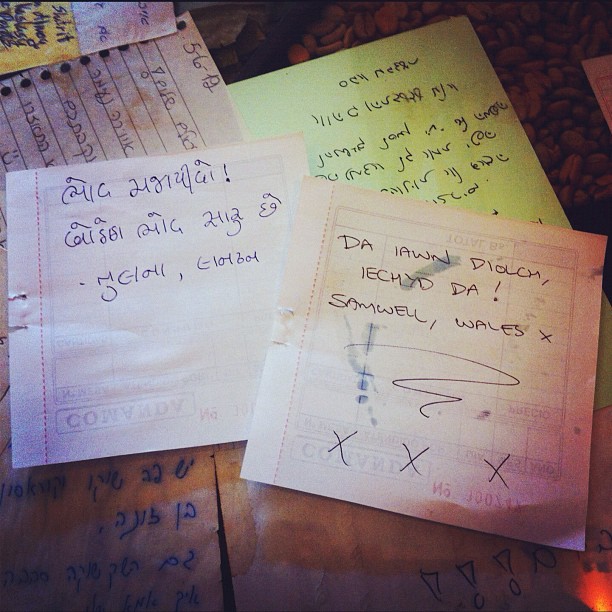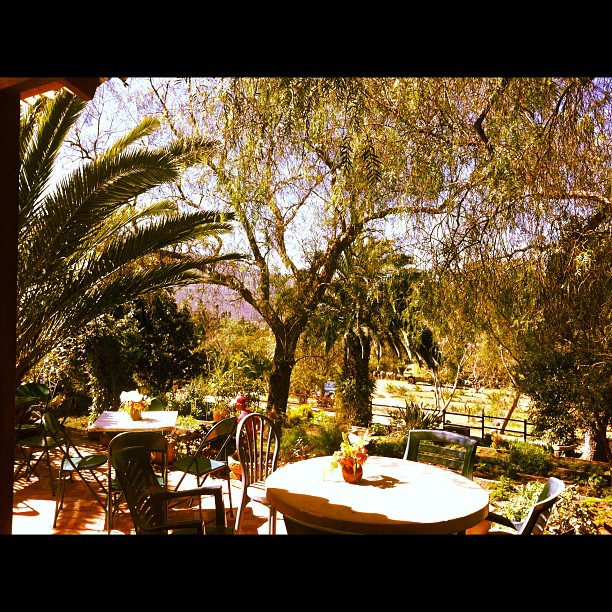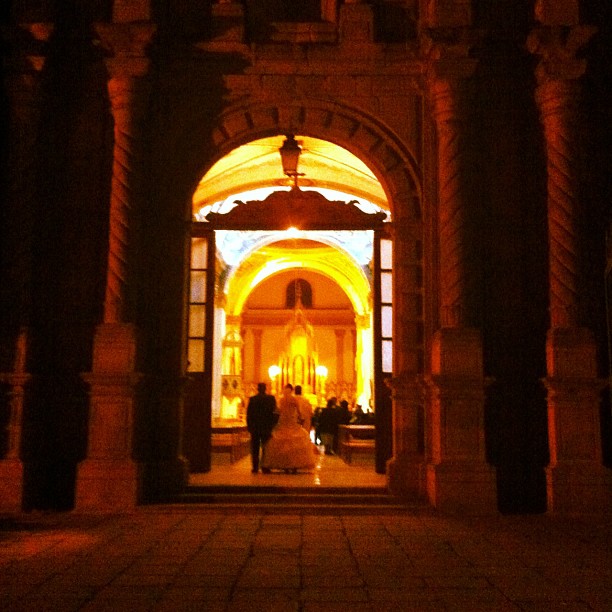Month: August 2012
View from the bus, approaching wine country on 'Ruta de vino'
Argentina. Hola Guapa.
I am giddy like a school girl. I have been wanting to visit this country famous for its abundance of steak and wine since as long as I can remember. We’re finally here. I can barely contain myself and Sam thinks I’ve gone slightly loco. He’s not wrong.
Our first stop is Humahuaca in the northwest region of Jujuy. It’s a beautiful little place with cobbled stones paving the streets, houses with wooden shutters and shops and restaurants with cute signs jutting out. It’s a beautiful picture really and i’m dying to sample what the local bodegas have to offer but we’re really feeling the pinch compared to Bolivia so resort to surviving on empanadas and calimuchos! We only stayed for a couple of days because as gorgeous as it is, there’s little to do there and we wanted the option of cheap eats that only a city can offer….We head south to the colonial city of Salta.
Salta was amazing and we welcomed an Argentinean city after two months of travelling, not only to top up on depleting toiletry supplies etc but also so Sam could go to the dentist to get his cracked tooth tended too! A temporary filling in place (a necessity when surrounded by such amazing food), we enjoyed our first amazing steak dinner courtesy of Mike & Kim (thanks for the early birthday present guys!) and befriended the locals including the little biagle, Luna, who we will both miss terribly.
We’re now in Cafayate and I never thought I would feel so in love with a place after Samaipata in Bolivia but I have to say, I am in love, maybe more so and I don’t want to leave – ever. It has bodegas (wine bars) everywhere, steak, empanadas, 28 degree weather (it’s their winter!!) and waterfalls. I have persuaded Sam to stay another night (like he needed much persuasion!) and tomorrow we hire bikes to sample yet more of the local tipple at the surrounding vineyards…
San Roque Capilla
San Roque Iglesia, Talapampa, Argentina
Salta photos
It's a dog's life…
Samuel va al dentista
Looking for a good dentist in Salta? Pablo Minetti is his name and fixing teeth is his game. He doesn’t speak any English but his son speaks a bit. Part of a tooth removed and a temporary filling all for £14. Jobs a good’un!
Salar de Uyuni y Adios Bolivia
Having enjoyed a tiring but rewarding 10 days in Sucre we headed south to Tupiza.
I’d done lots of research on the Salar de Uyuni (Bolivia’s famous salt flats) and it seemed that the best way to see them was travelling south to Tupiza and working your way back up the country over a 4 day trip so that you can enjoy the changing landscapes and end on the pinnacle: watching the sunrise on the Salar on the fourth day.
Tupiza itself was very cool. It reminded me of some of the North American deserts around monument valley because of the red rock and giant cacti which surrounds the city. It really felt like we were in the middle of a wild west set and so we thought it fitting to go horse riding to see the surrounding canyons nearby. It was one of the coolest things we’d done so far (not least because I fell in love with my horse Tallia). The terrain was dry and dusty. You could see whirlwinds of sand circling afar and the canyons we passed were incredible and reminiscent of the rocks at Yosemite national park. They were tall, almost needle shaped pillars that had been weathered away by strong winds. Sam and I felt incredible to be out there. It was a taste of what was to come on our Salar de Uyuni tour…
There were 6 of us in the 4×4 (we went with Los Salares): Moses (the guide and driver), Augustina (the cook), Jack, Jenna, Sam and I. We really lucked out and had a great group. Augustina was an amazing cook, Moses was a great driver, and Jack & Jenna were a lovely couple who both Sam and I instantly hit it off with and ended up sharing plenty of wine and singani with during our four days!
Calling the trip the Salar de Uyuni tour is a little bit misleading and doesn’t do it justice. It’s really a tour of south west Bolivia and there is no better way to really see what this land locked country has to offer. One minute you’re driving through the backdrop to Salvador Dali’s famous desert painting of the melting clock, and the next you’re surrounded by incredibly beautiful lagunas in a variety of colours -pink, green, white. There are elegant flamingos dotted all over the lakes and hanging in the background are dormant volcanoes (or on one occasion an active one) covered in snow.
It’s not until the final day that we set out sights on the Salar de Uyuni. We got up at 5.30am to make sure we’re on the salt flat for sunrise at 6.30am. It was everything it’s promised to be – surreal, breathtaking, magical, stunning and bright white!
As the sun creeps up, we’re slowly engulfed by a white glow that illuminates everything. Every direction we look in we can see blankets of white and a mirage on the horizon where sky meets salt. We’re told the salt is 120m deep which accounts for its pure white colour. It’s almost too bright to even look at the ground by the time the sun is high in the sky. We’ve been blown away by the last four days and whilst there is no way to fully describe what we saw, we hope some of our pictures will relay Bolivia’s charm, even if it is only a fraction of it.
(Pics from iPhone, camera pics to follow…)
I’m sad to be saying goodbye to Bolivia. Sam and I have fallen for it in a big way. The landscapes have been breathtaking, some of the most beautiful I’ve ever seen and I feel like we really got to know Bolivia and Bolivians staying in Sucre in a way we didn’t with Peru.
That said it’s not all sad, we’re just about to set foot into steak and wine country. This could just be heaven for me.
View some of the 360’s:
The salt flats
Isla del Piscado
The ‘Dali Dessert’
Laguna Honda (flamingos)
Laguna Verde (green lagoon)
Sucre
We’ve been busy in Sucre. In the mornings we volunteer at a nursery which is a short bus ride out of town, in the afternoons we have Spanish lessons and in the evenings we teach conversational English to locals (yeah that’s right, I’VE been teaching English).
The nursery is a tiring but amazing experience. The moment we walked in the door the kids were flinging themselves at us as if they’d known us forever. This nursery is run by a few of the kids mothers. It’s basic (the place itself doesn’t even have an address) and mostly funded by organisations like our language school (The Fox Institute). The kids on the whole are great and some of them are from very difficult backgrounds. Our Spanish is still quite basic and the kids speak a mix of Spanish and Quechua so our verbal communication is extremely simple, although it hasn’t seemed to matter much. They’re physical and boisterous, but friendly and fun.
Lunchtime is hilarious. The portions they give the kids are massive and we have about 30 minutes to feed as many of them as possible before we leave for our Spanish lessons. Starters is a bowl of soup with chips or potatoes in it and their second course is a decent sized plate of meat, rice and chips or potatoes (and this is even for Rosa Maria the one year old). The younger ones then usually begin falling asleep at the table and in their food, in which case they’ll have cold water splashed on their faces and be ready for round two. It sounds quite rough on the kids but apparently a lot of them may not get much to eat at home, so these meal times are very important and you can see how much the nanny’s care about them.
Spanish is more difficult than we thought and I’m certainly struggling with the verbs especially (much more difficult than English). Edith, our teacher is great though and good fun. On Friday, the second half of our lesson was spent in the kitchen with her, cooking a traditional Bolivian dish called Saice which we we’ve made for ourselves since (kind of like a Bolivian bolognese made with sweet chilli instead of tomatoes).
For our English students in the evening, we normally ask questions about Bolivian politics, education, etc and then correct their English as we discuss. Otherwise, if they have questions on gramma, we’ll get to the nearest Internet cafe and download a lesson plan to go through with them the next time we see them. All the students have been great and it’s been interesting for us to find out about life in Bolivia and about the English language!
Sucre as a city has also been really nice and reminded us both of Arequipa in Peru. It’s been hard work for us here but we’ll definitely miss the people, especially the kids.
Humahuaca, Argentina
Tupiza from horseback
An £8 trip on horseback from Tupiza proved to be much better than we expected (who knew Tul would be such a fan of the wild west). A half day trek past devils rock to the Inca canyon (not far from the place where Butch Cassidy & Sundance supposedly met their demise) turned out to be one of the highlights of our trip.
The cowboy & the Indian
Puerto Diablo. Yee-ha!
Sam making his mark on Tupiza
Tea time in Sucre
Garden giggles, Sucre
Santa Catalina Monastery photos (Arequipa)
Sucre, the city of secret courtyards
Samaipata
The last stretch of our 48hr journey, a fun and chilled 2.5hr trufi (shared taxi) ride to Samaipata put us in the right mood for the place itself. Sat in the back of a minivan with a couple and their toddler, two other girls and two boys. When the vehicle stopped at any point along the way there would be a swarm of people to mob us and try and sell us tamales, fruit, sweets, meat, etc and all of them for a few ‘Bolivianitos’ (the local’s romantic way of saying it’s just a few “little Bolivianos”). It felt as much like travelling as any of the trip yet, and Samaipata felt as much ‘off the beaten track’ as any of the places we’ve been.
Samaipata is apparently becoming popular with Bolvians as a holiday destination. However, it is extremely quiet when we arrive. It’s as much like South America as I’d imagined (more than Peru was) and a bit like a town from a wild west film. We both love it from the second we step foot outside the car.
Places open when they want to and close when they feel like it. If you ask what time they close you’re normally answered with a shrug accompanied with “la noche”.
Like any decent holiday destination they have an amusement arcade (a room with 5 Sony Playstations). There’s a random room on a street near the market which has a pool table and table football which we have no idea who owns or who is allowed to use, although it has people playing pool most days. There’s a saltenaria (saltenas are like South American pasties), that didn’t have any saltenas for sale whenever we asked.
There are Inka ruins and plenty of treks surrounding the town and we’re off to the rain forest in a few days for one night.
There’s one bus everyday out of town to Sucre (12hrs, B/60-80).
There’s the usual amount of friendly dogs milling around and the place is small enough that you begin to recognise most of them after a short while.
All in all this could be one of our favourite places yet. One of the restaurant owners here told us there are 26 nationalities in this tiny town and we can see why. People come out here to visit and never leave. Unfortunately our stay here will come to an end soon, but we’ll both have extremely fond memories of this place and who knows, maybe we’ll be here again…
Looks like your average saltena. But it's the greatest and best empanada in the world.
Immense fruit salad from Sucre market for a quid
Goodbye Peru. Hello Bolivia. And a little slice of heaven
Unfortunately our last impression of Peru was Puno (Peru’s side of Lake Titicaca) which frankly neither of us were impressed by in any way. It was dusty, dirty and touristy. I wish there was something endearing about it so we could have had a fond farewell but all it left us with was the flu and altitude sickness.
Copacabana was our first stop in Bolivia and a welcome respite! Although we were both ill we quickly fell in love with the relaxed and generally calm pace of the town and despite it’s geographically proximity to Puno (3 hours along the coast of Lake Titicaca) it was a far cry from it’s Peruvian counterpart.
We spent one of our three nights on Isla del Sol (sun island) but because we were so sick we spent most of the time in bed and enjoyed the views the island had to offer from the sanctuary of our quaint little hostel.
LA PAZ
Next stop after Copacabana was La Paz. We were ill for a lot of out time in La Paz – both altitude sickness coupled with the flu made it hard to breathe let alone climb a flight of stairs. La Paz being built in a valley – and our room being on the four floor- we were easily exhausted and succumbed our bodies to rest and spent our days in bed watching Spanish dubbed films.
Not feeling ourselves, we were feeling homesick and seeked home comforts so found a good ol’ British pub (Oliver’s Tavern) were we treated ourselves to fish & chips and shepherds. We also managed to catch the latest Batman flick and it seemed both worked! We felt better for our last night in La Paz. We celebrated by enjoying some Bolivian wine washed down with some amazing Bolivian music complete with a couple of renditions of Buena Vista Social Club’s Chan Chan.
La Paz ended up being a little sanctuary regardless of it’s chaotic heart and made us miss London in so many ways. Luckily for us Oliver’s Tavern was showing the Olympic opening ceremony complete with a pint of english breakfast tea (impossible to find anywhere!) so we could pretend to feel like we were in the midst of all the fanfare in London and surrounded by other fellow Brits in a home away from home.
SAMAIPATA: A LITTLE SLICE OF HEAVEN
Our plan from La Paz was to head towards the central valleys and the eastern lowlands to enjoy some of the warmer climates and green tropical lowlands. Our first stop was Cochabamba where we planned to stop for a couple of nights as we’d heard wonderful things about its vibrant and youthful atmosphere and because it was known as the ‘city of eternal spring’. However we arrived at 6am after 10 hours on a bus and with nowhere to stay. The previous night it was the Olympics opening ceremony and instead of sleeping off the shots of rum we were doing we decided it would be a much better idea to catch an overnight bus to Cochabamba the same evening. Perhaps unsurprisingly then, upon our arrival the balmy draw of Cochabamba was suddenly lost on us.
We found a cheap hostel (I’m still dubious it was a hostel) and slept for a few hours until lunchtime before walking around and deciding that it was just not what we were looking for. We needed to find a route out and we needed to get to our next destination, Samaipata, as soon as possible. That ended up being the 9pm bus.
A 12 hour overnight journey to Santa Cruz that night followed by a 3 hour trufis (shared taxi with 7 other passengers) to Samaipata, we found ourselves at midday standing with our backpacks in only what we can describe as a little slice of heaven. It was everything we had imagined South America to be and look like. It was beautifully quiet (the daily siesta means a temporary midday closure for 2 hours except for the town’s market which is always full of life).
Our hostel was perfect. A little two tiered cabin with our bed on the top and living quarters at the bottom, complete with balcony and hammocks to relax in. £14 a night for us both including breakfast.
Samaipata is nestled in a valley and is surrounded by rugged, forest covered mountains and somewhere we’re planning on staying for 4-5 days. Our balcony views are breathtaking and for the first time in our trip we’re just going to enjoying reading, writing, listening to music and immersing ourselves in the town’s daily pattern of doing very little other than watching people that pass by. It’s strange how we’ve not done more of that until now but there’s plenty of time to make up for it here.
Next stop will be 10 days in Sucre (Bolivia’s white city which has banned neon signs, much to my delight!) for Spanish classes and volunteering at a children’s nursery…
Chuflay happy hour in Sucre. And cards of course. Always a game of cards.
Pumping some iron.
Panoramic of Samaipata, Bolivia
A post about this place to come soon, but here´s a panoramic of possibly our favourite place in the world, Samaipta.
Refugio Los Volcanes
We were lucky enough to spend 2 amazing days at Refuge Los Volcanes in Bolivia. See the 360 view here.
